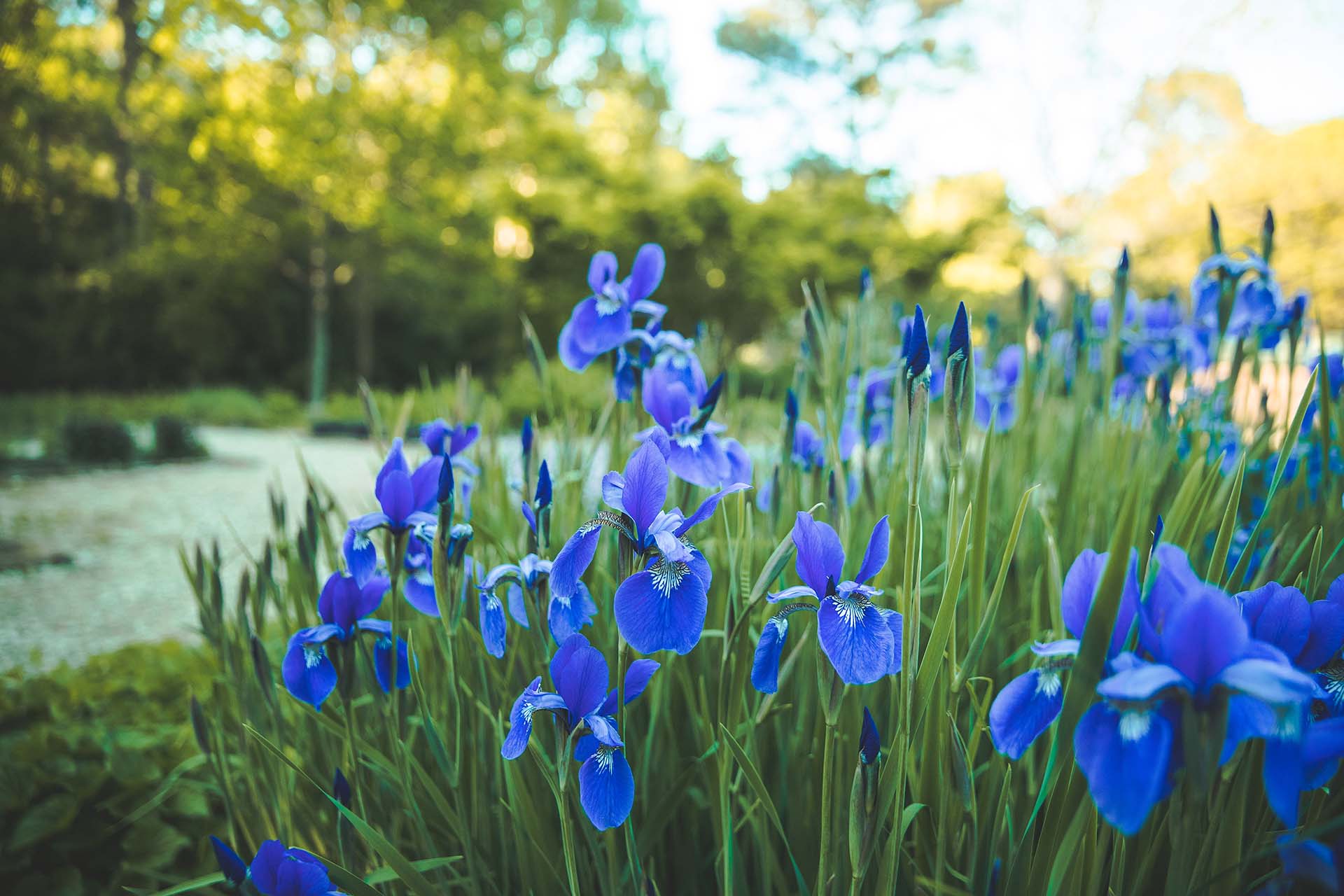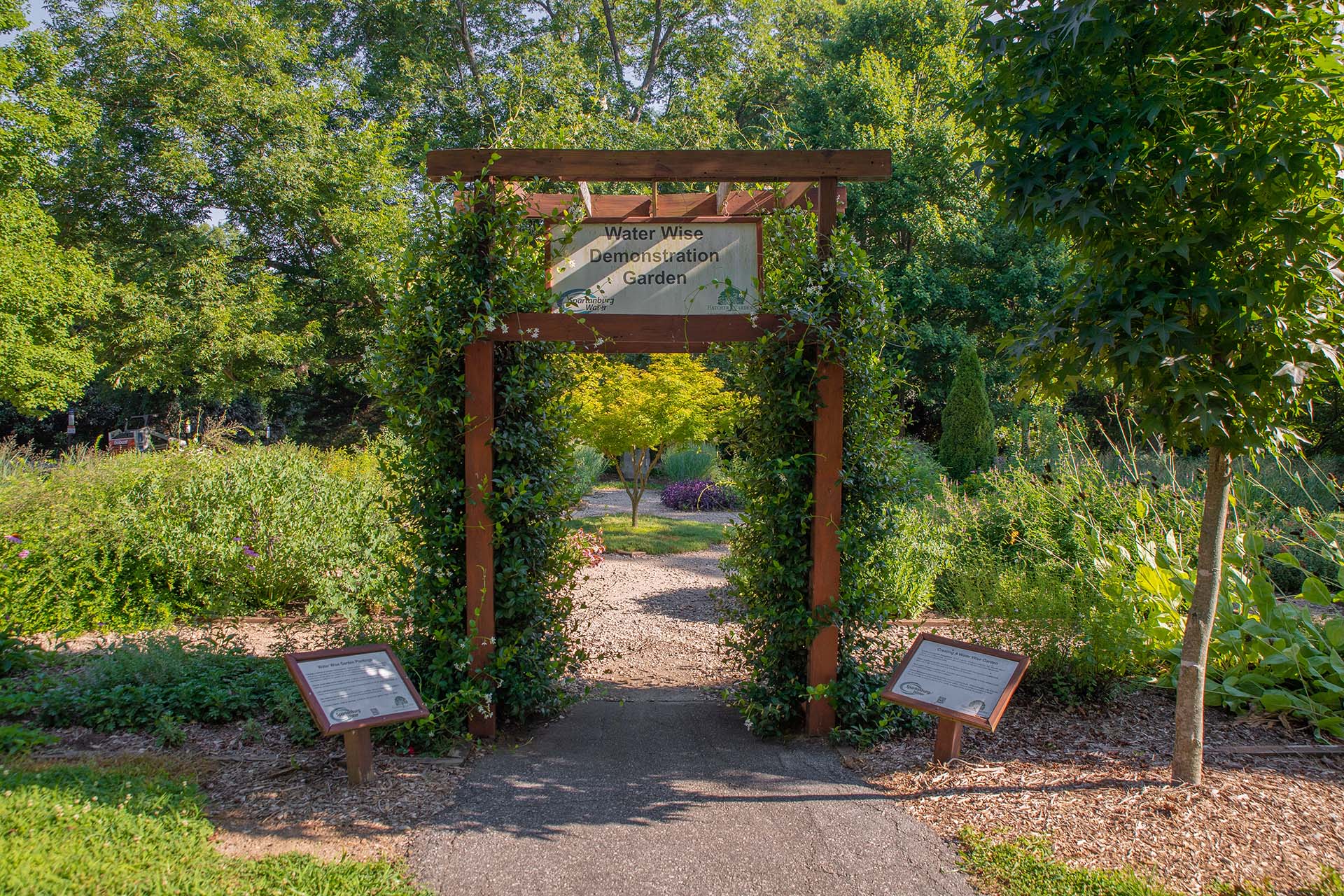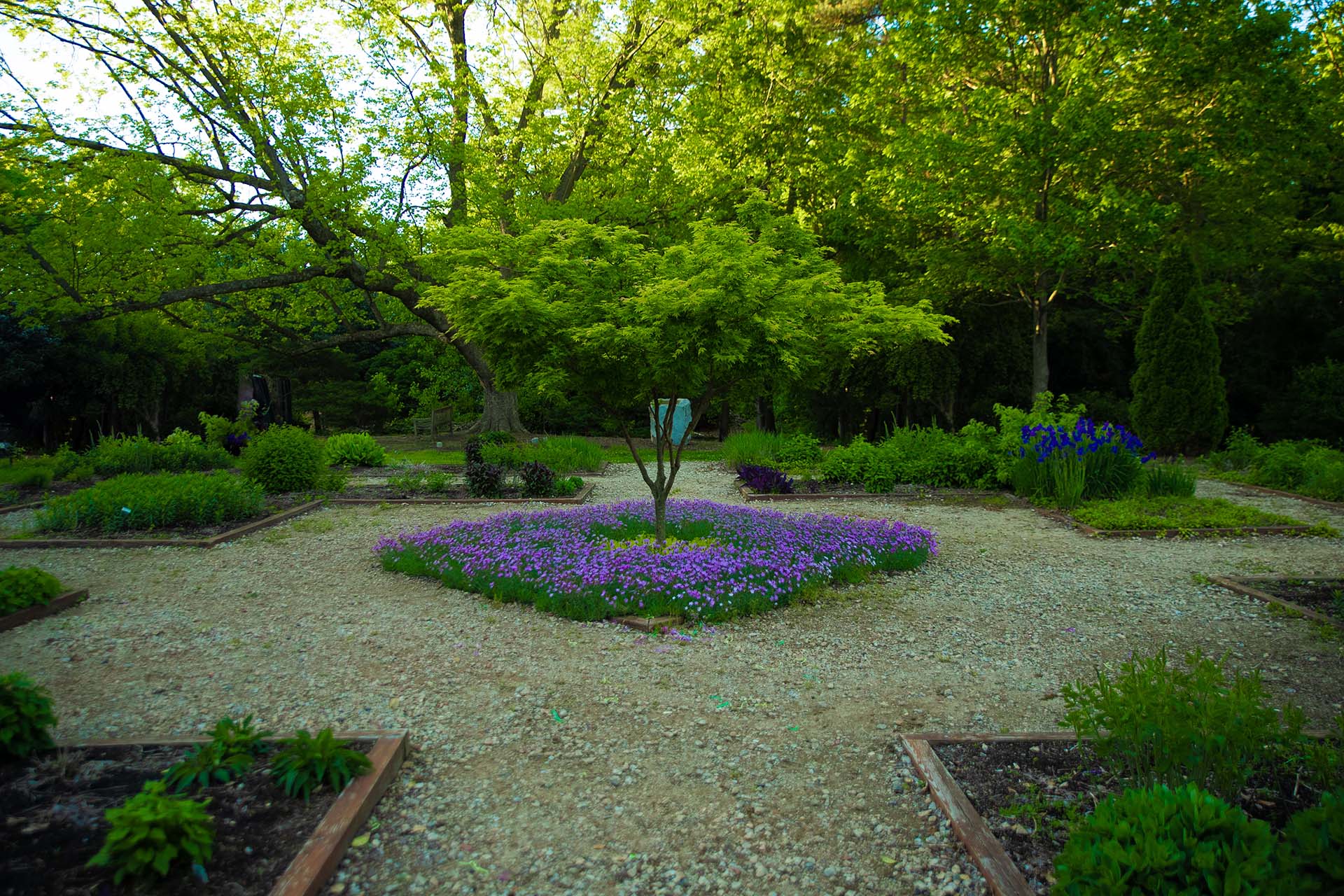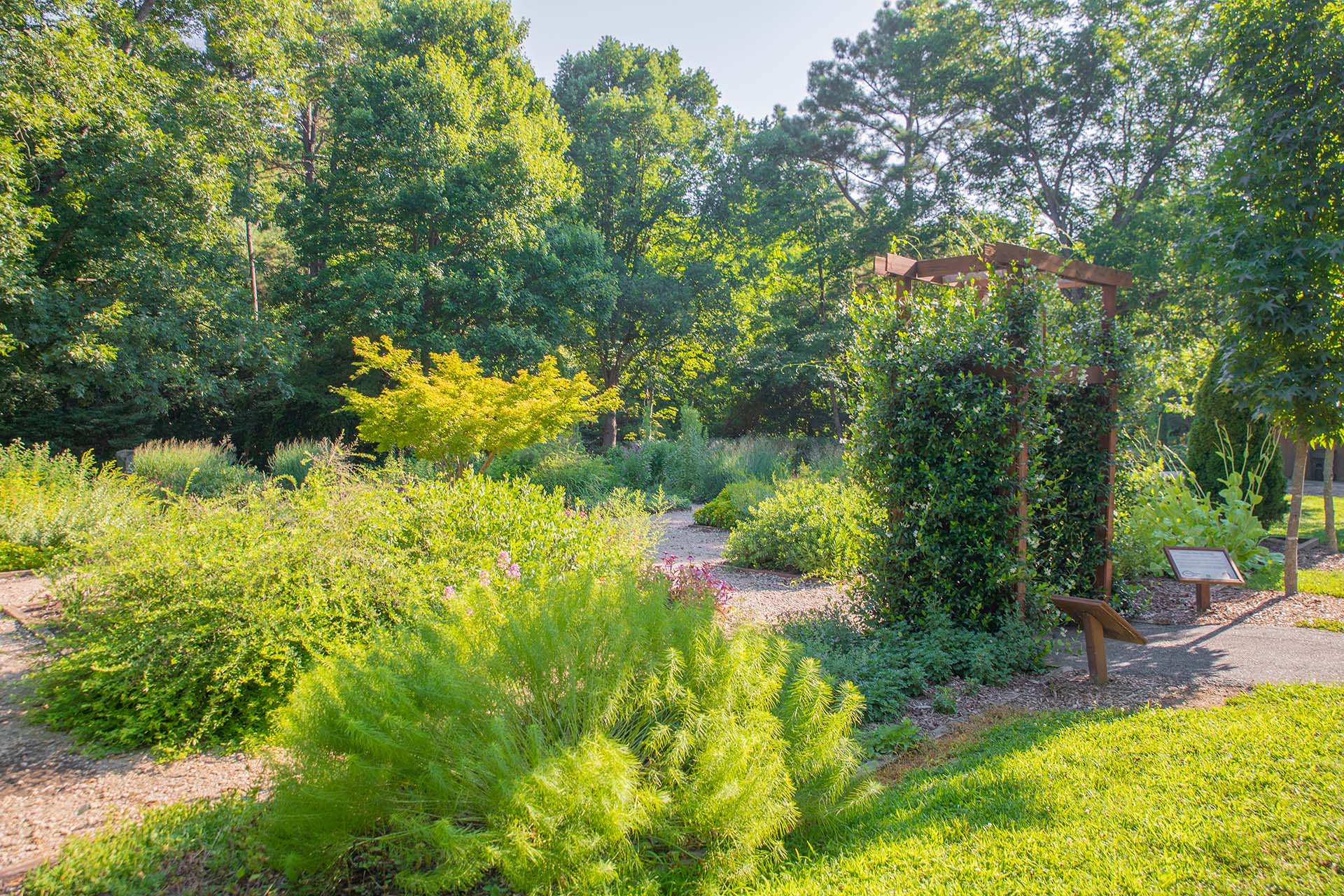Water Wise Demonstration Garden
This multi-bed garden shows off the stamina of flora that can tolerate our dry Southern summers without the aid of additional watering.
Located in a former perennial trial garden, the Water Wise Demonstration Garden was designed with input from Hatcher’s Horticulture Committee, the Charles Lea Center and both Spartanburg Regional Hospice and Interim Healthcare Hospice. The garden serves as an educational area, where everyone can visit and learn about this low-maintenance, drought-resistant growing space.
The Hatcher Garden staff worked closely with Spartanburg Water general manager, Sue Schneider, to design and implement the educational garden. Arborvitae and a Japanese maple, gifts from Roebuck Wholesale Landscaping, anchor the garden filled with perennials chosen specifically for their ability to thrive without irrigation in Spartanburg’s climate. Dwarf varieties were selected to keep garden pruning to a minimum.
Making the garden wheelchair accessible was one of the major goals of the project. A paved pathway, funded by a grant from the Spartanburg Regional Foundation, winds from the Handicapped Parking/Safe Bus Turnaround to the garden space, ending at the pavilion where visitors can find expanded restroom facilities and a water fountain. Generous funding from Spartanburg Water, the Jess Taylor family, and other community members allowed for restroom expansion and compliance with the American Disabilities Act (ADA).
Create Your Own Water Wise Garden
Location. Location. Location.
Locate your garden thoughtfully. Select a garden site that is relatively flat. Rainfall drains rapidly from a steep slope. Conifers and evergreens on the north and west can provide protection from prevailing winds.
Testing! Testing!
Obtain a soil test to determine lime and fertilizer needs rather than applying amendments randomly. Proper soil preparation is a requirement for success.
Start Small
Consider available time. A smaller, well-maintained garden is more attractive and productive than a larger one that is unkempt.
Make a Path
Create pathways to eliminate compaction of soil in planting beds. Where possible, use recycled or repurposed items to delineate beds and create paths. Gravel or other permeable material allows rainwater to soak in, not run off to create drainage issues outside the garden.
Choose Wisely
Choose a mixture of drought tolerant plants. Shrubs, perennials and bulbs form the “backbone” and can be augmented with long-blooming, drought tolerant annuals for extended color. Include plants that provide pollen and nectar if you want to attract butterflies and bees. Incorporating vegetables or herbs into the garden can be ornamental and provide a kitchen bonus.
Group by Need
Cluster plants with similar needs together. If serious drought indicates the need for hand-watering, having the thirstiest plants in one place allows the concentrated use of supplemental water.
Save Time & Energy
Limit maintenance time and equipment use by selecting plants that will not outgrow their spaces or require extensive care to look their best.
One Word: Mulch
Use mulch to reduce water loss and the need for weeding. Natural mulches like pine needles or aged wood chips will retain moisture and enhance the soil as they decay.
Enjoy!
Include a bench, chair or rest spot, so that you can enjoy the garden’s sights and smells.
Interested in growing Water Wise plants? You can view the plants we have in our Water Wise garden, some of them are even available for purchase.




